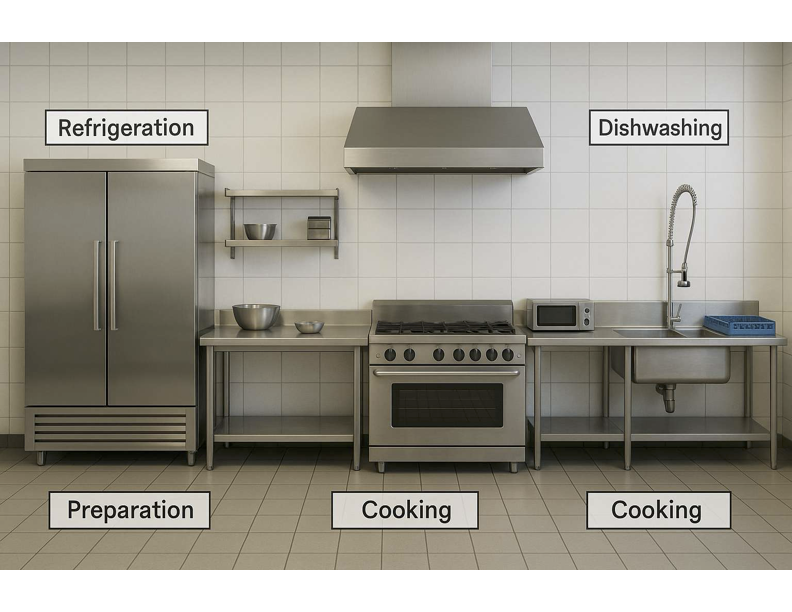The food preparation area is where the action begins in any commercial kitchen. Before the sizzle hits the pan, before plates get garnished, before servers scoop up those beautifully plated dishes—everything starts in the prep zone.
Think of it as the engine room of a restaurant. If it’s not running clean, tight, and fast, the whole operation stalls.
What Is the Food Preparation Area?
The prep area is where raw ingredients get transformed into ready-to-cook components. It’s where vegetables are chopped, meats are trimmed, sauces are blended, and mise en place comes to life. If the line cooks are the sprinters, prep cooks are the marathoners laying the groundwork.
This space typically includes:
-
Work tables (usually stainless steel for durability and sanitation)
-
Prep sinks for washing produce and thawing proteins
-
Cutting boards color-coded to prevent cross-contamination
-
Mixers, slicers, blenders, and food processors
-
Ingredient bins and cold storage for keeping perishables within reach
-
Scales, measuring tools, and containers for portioning
Why the Prep Area Matters
1. Efficiency
The prep area is designed for speed and flow. A well-organized station lets cooks move fast without hunting for a knife, reaching over someone else, or crisscrossing the kitchen. Seconds matter when you're working service on a Friday night.
2. Consistency
Good prep = consistent food. Whether it’s julienning carrots to a perfect matchstick or marinating chicken exactly the same way every time, prep is what ensures that every plate looks and tastes the same. No surprises. No screw-ups.
3. Food Safety
This is ground zero for cleanliness. Raw and ready-to-eat foods are strictly separated. Sanitizer buckets are always within arm’s reach. Gloves are worn when needed. Surfaces are scrubbed often. One slip here can trigger a health inspection nightmare—or worse, make someone sick.
The People Who Own the Prep Area
Prep cooks don’t always get the spotlight, but they’re the backbone of the kitchen. They're in early, often before sunrise, knocking out mountains of work that make service smooth. They handle:
-
Bulk vegetable prep
-
Portioning proteins
-
Making stocks, soups, and sauces
-
Prepping garnishes
-
Labeling and dating everything they touch
They’re fast, focused, and fiercely organized.
Challenges in the Prep Area
Let’s be real—it’s not all smooth sailing:
-
Space is tight, especially in older or smaller kitchens.
-
Time is always short. There’s always more to do than time allows.
-
Coordination is critical. One delayed task can jam up the whole day’s flow.
-
Inventory can be a beast. Running out of prepped items mid-service? Rookie mistake.
This is why the best kitchens run on prep lists, clear labeling, and tight communication between chefs and cooks.
Bottom Line
The food preparation area might not have the glamour of the expo line or the drama of the pass, but it’s the foundation. It's where organization meets discipline, where the chaos gets tamed before the rush begins. Without it, the whole system falls apart.
If the dining room is the face of a restaurant, and the hot line is its heart, then the prep area is the brain—quietly planning, organizing, and setting the stage for everything to run right.

